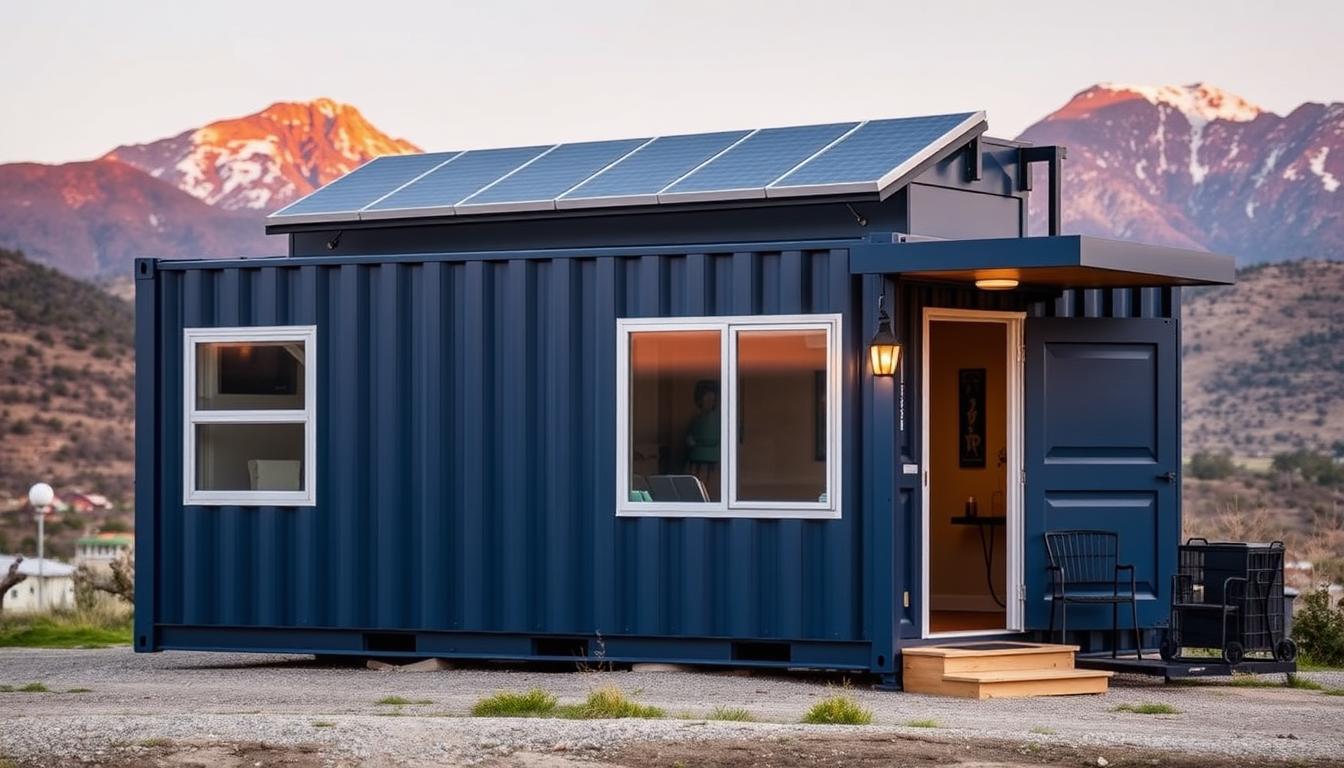Transforming shipping containers into comfortable, mobile living spaces is revolutionizing the tiny home and camping world. These steel boxes offer incredible durability, affordability, and endless customization possibilities. Whether you’re looking for a weekend getaway vehicle or a full-time tiny home on wheels, a shipping container camper might be your perfect solution.
This comprehensive guide will walk you through every step of converting a standard shipping container into a functional, comfortable camper that can travel with you or serve as a permanent retreat.
A fully converted shipping container camper ready for adventure
Benefits of a Shipping Container Camper
Cost-Effective Solution
A shipping container camper typically costs 30-50% less than traditional RVs of comparable size. With used containers starting around $1,500-$3,000 and new ones at $5,000-$7,000, you’re getting an incredibly strong structure as your foundation. Even after conversion costs, most DIY container campers remain under $20,000 total.
Exceptional Durability
Built to withstand ocean voyages and stacking forces, shipping containers offer unmatched structural integrity. Their weatherproof, corrosion-resistant Corten steel construction means your camper will last decades with minimal maintenance, unlike traditional RVs that deteriorate much faster.
Eco-Friendly Repurposing
By repurposing a shipping container, you’re giving new life to an existing resource. This reduces demand for new materials and keeps these steel giants out of scrap yards. Add solar panels, rainwater collection, and efficient insulation, and you’ve got an environmentally responsible living solution.
Customization Potential
The rectangular, open design of shipping containers provides a blank canvas for your creativity. From layout to finishes, every aspect can be tailored to your specific needs and aesthetic preferences, unlike mass-produced RVs with limited customization options.
Ready to Start Your Container Conversion?
Download our free Container Camper Planning Checklist to ensure you don’t miss any critical steps in your project.
Planning Your Shipping Container Camper
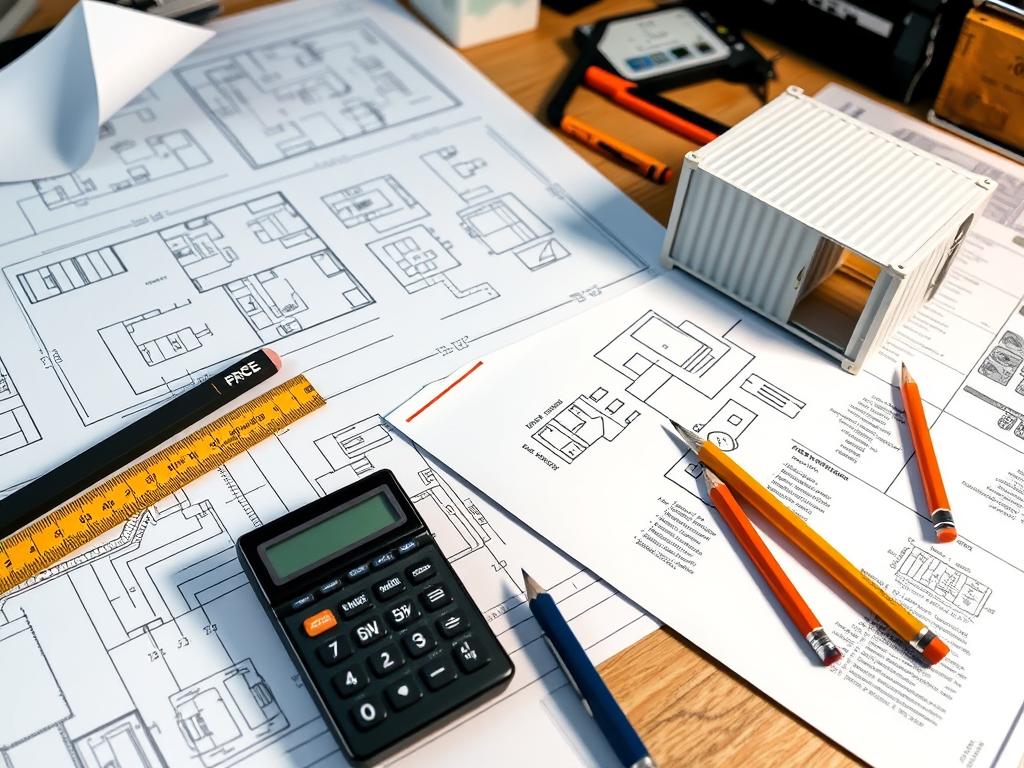
Careful planning is essential for a successful container conversion
Selecting the Right Container
Start with choosing between 20-foot and 40-foot containers. A 20-foot container offers approximately 160 square feet of living space and is easier to transport, while a 40-foot container provides a spacious 320 square feet but requires a larger truck for moving. For most camper conversions, a 20-foot high-cube container (with extra height) offers the ideal balance of space and mobility.
What’s the difference between new and used containers?
New (one-trip) containers: Minimal wear, no rust, clean interior, but cost 2-3 times more than used.
Used containers: More affordable but inspect carefully for structural damage, excessive rust, or chemical contamination. Look for “cargo-worthy” certification.
Permits and Regulations
Before purchasing a container, research local zoning laws and building codes. Requirements vary widely by location:
- Some areas classify container structures as temporary buildings with simpler requirements
- Others require full building permits, foundation plans, and inspections
- For truly mobile container campers, RV certification may be required for campground access
- Check road transport regulations if you plan to move your container frequently
Find Container Suppliers Near You
Connect with reputable shipping container dealers who can help you select the perfect container for your camper conversion.
Step-by-Step Conversion Process
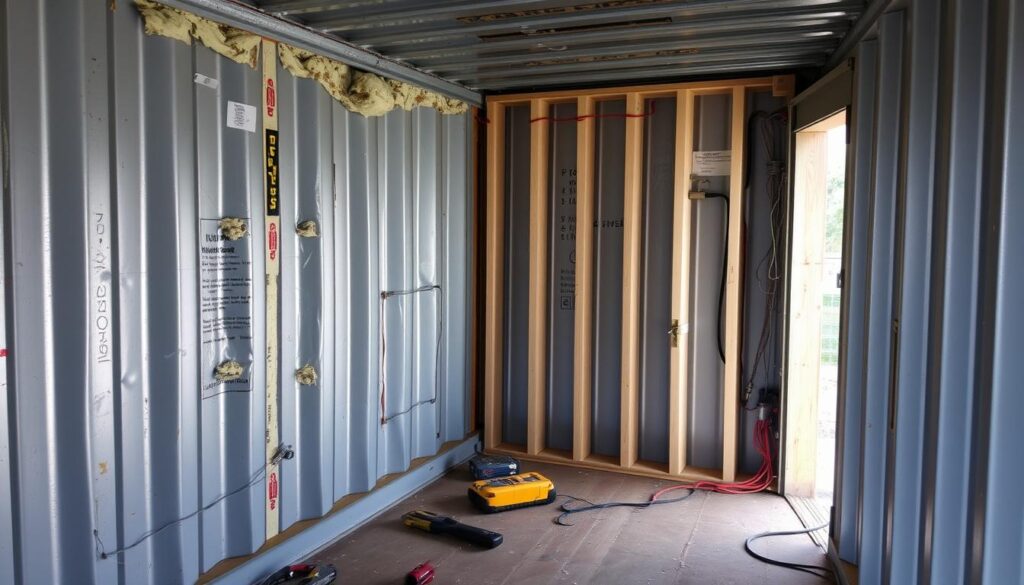
The container conversion process requires careful planning and execution
Preparation and Cleaning
Begin by thoroughly cleaning your container. Used containers may have chemical residues, rust, or debris that need removal. Pressure wash the interior and exterior, then treat any rust spots with a rust converter and primer. This creates a clean canvas for your conversion work.
Cutting Openings
Carefully plan and mark all openings for windows, doors, and ventilation. Remember that cutting affects structural integrity, so reinforce around all openings with steel framing. Use a plasma cutter or angle grinder with metal-cutting discs for precise cuts. Always wear proper safety equipment including eye protection, gloves, and respiratory protection.
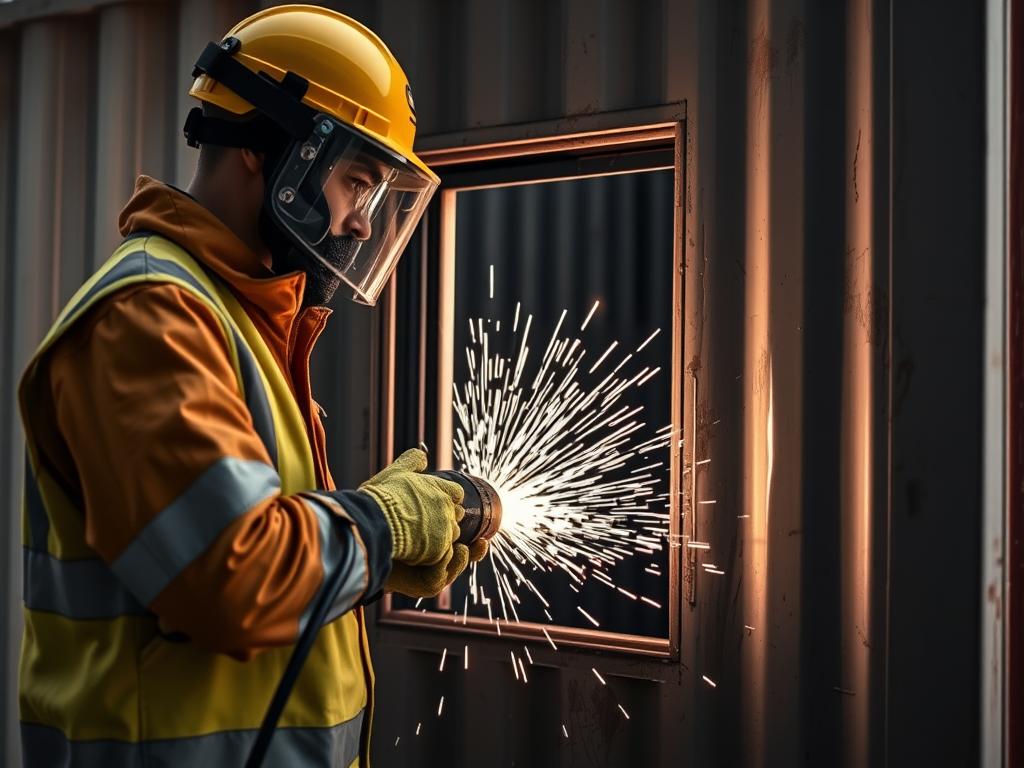
Always use proper safety equipment when cutting openings in your container
Insulation and Moisture Control
Insulating your container is crucial for temperature regulation and condensation prevention. The most effective options include:
Spray Foam Insulation
Highest R-value per inch and creates a vapor barrier, but more expensive and requires professional application or special equipment.
Rigid Foam Boards
Good insulation value, moisture resistance, and DIY-friendly. Requires careful sealing at all joints to prevent moisture infiltration.
Mineral Wool
Excellent sound dampening, fire resistance, and moderate cost. Requires a separate vapor barrier to prevent condensation issues.
Regardless of insulation type, install a proper vapor barrier on the warm side of the insulation to prevent condensation inside walls, which can lead to mold and rust issues.
Get Professional Insulation Advice
Connect with insulation specialists who understand the unique challenges of container conversions.
Interior Systems Installation
Electrical System
Plan your electrical system based on your power needs and intended use. For mobile container campers, consider a combination of:
- Solar panels (100-400W) with charge controller
- Deep-cycle batteries for energy storage
- Inverter to convert DC to AC power
- Shore power connection for campground hookups
- LED lighting to minimize power consumption
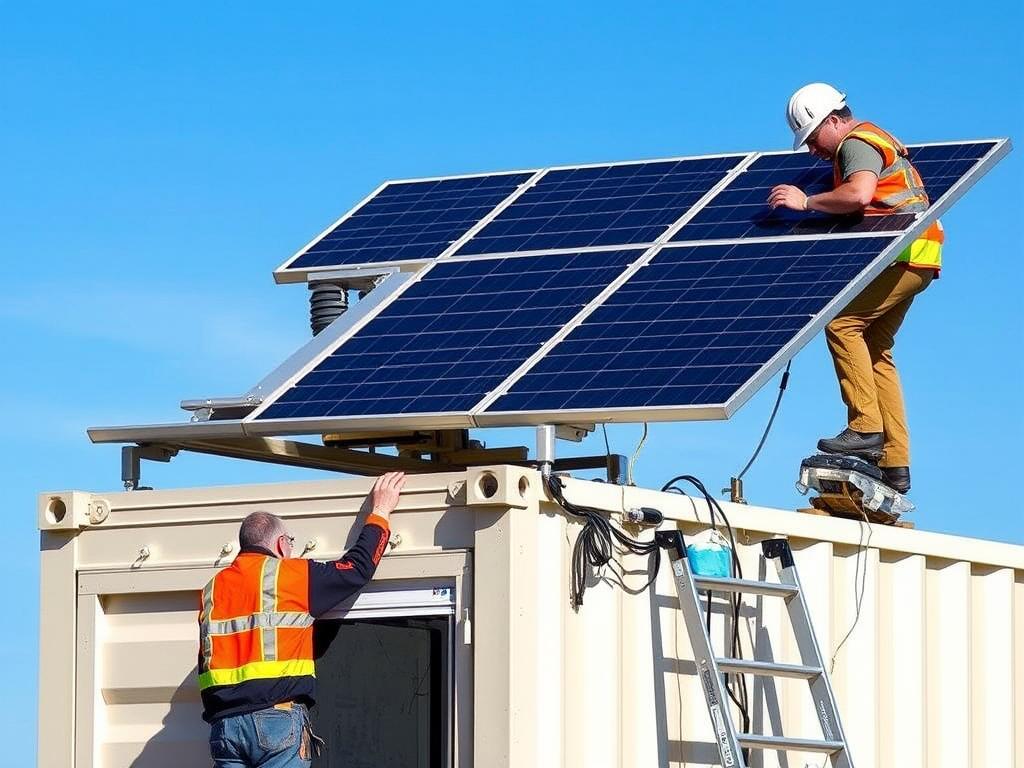
Solar panels provide sustainable power for off-grid container camping
Plumbing System
For a functional camper, you’ll need a basic plumbing system. Consider these options:
Water Supply
- Freshwater tank (40-100 gallons)
- 12V water pump
- Water filtration system
- Hookup for external water source
Waste Management
- Gray water tank for sink/shower drainage
- Composting toilet (no black water tank needed)
- Alternative: cassette toilet or portable camping toilet
- Hookups for campground sewer connections
Climate Control
Maintaining comfortable temperatures in a metal container requires thoughtful climate control:
- Mini-split heat pump systems offer efficient heating and cooling
- Roof ventilation fans help remove hot air and reduce condensation
- Propane or electric space heaters provide supplemental heat in colder climates
- Reflective paint on the exterior reduces heat absorption
Interior Layout and Design
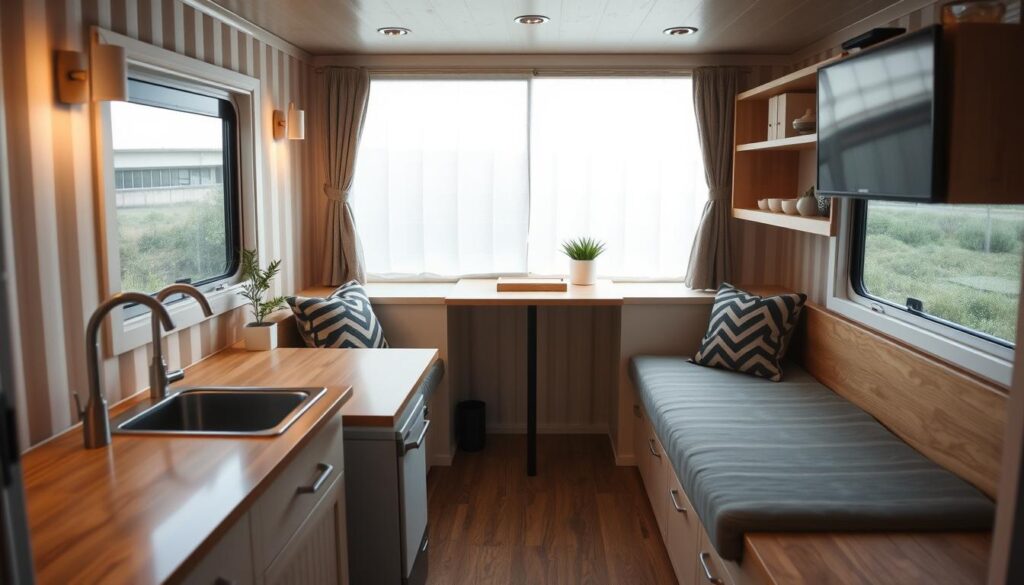
Efficient space planning is essential in container camper design
Designing your container camper’s interior requires maximizing limited space while creating a comfortable living environment. Consider these layout options:
Studio Layout
Open floor plan with convertible furniture that serves multiple functions. Ideal for weekend getaways or single travelers.
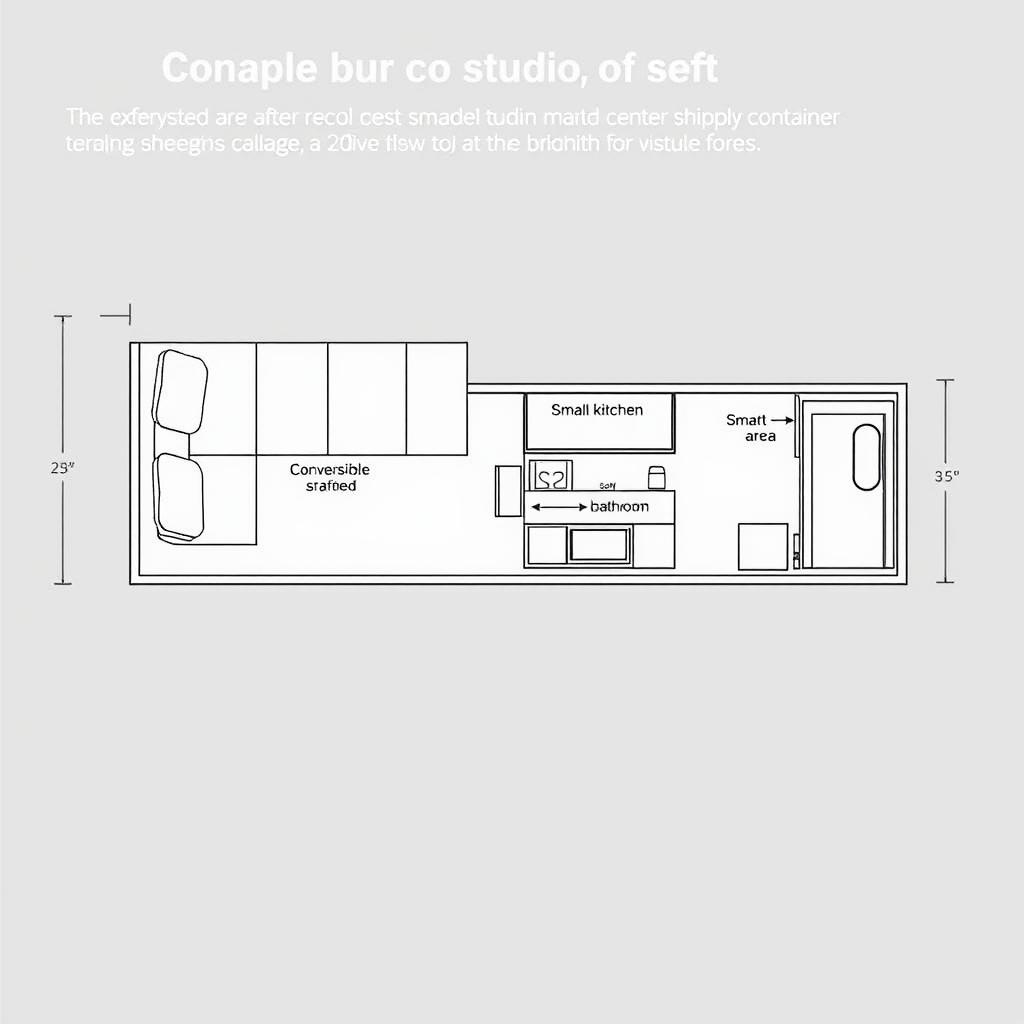
Split Layout
Divided into distinct zones for sleeping, living, and bathroom/kitchen. Offers more privacy but less open space.

Expandable Design
Incorporates slide-outs or fold-down deck areas to increase living space when parked.
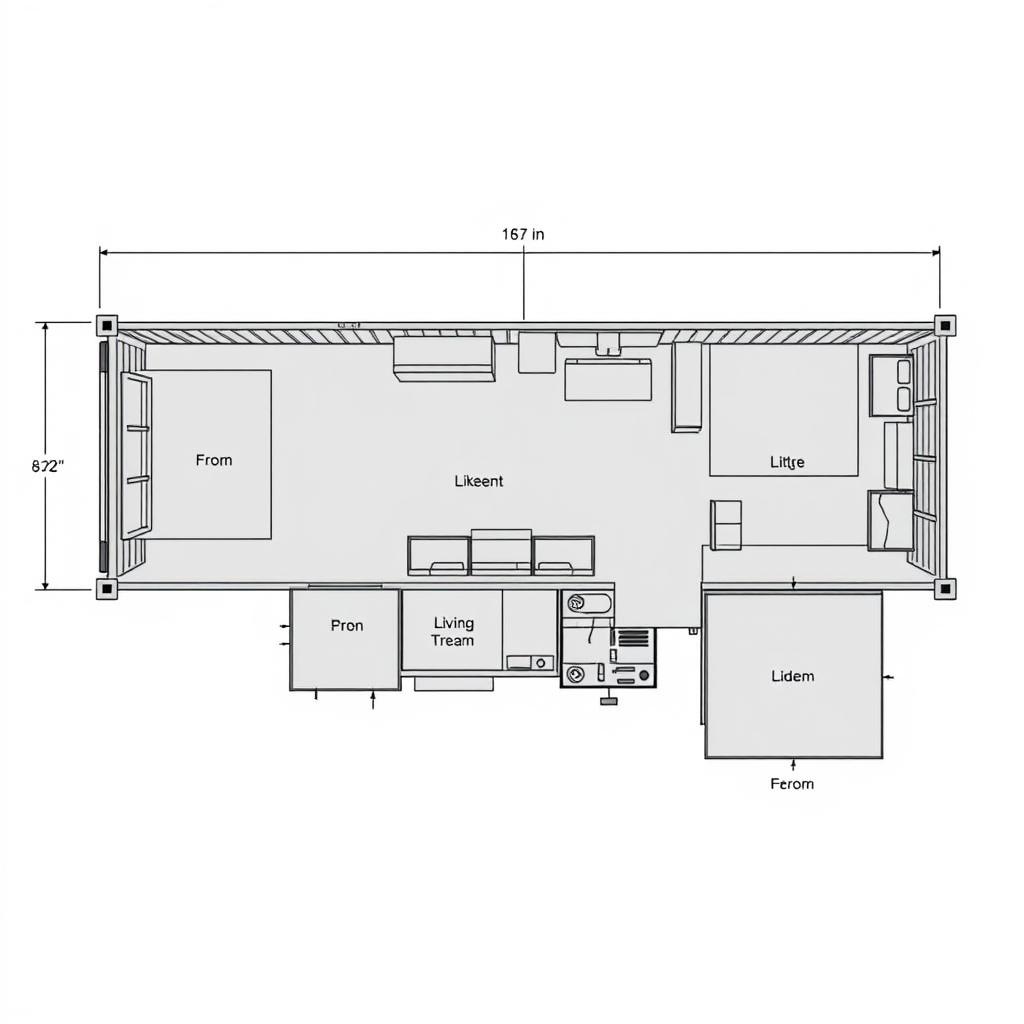
Space-Saving Furniture Ideas
Maximize your limited space with these multi-functional furniture solutions:
- Murphy beds or convertible sofa beds
- Drop-down or fold-away tables and desks
- Bench seating with integrated storage underneath
- Sliding doors instead of swing doors
- Wall-mounted foldable shelving and storage
Download Container Camper Floor Plans
Get access to our library of proven container camper floor plans to jumpstart your design process.
Cost Breakdown for Container Camper Conversion
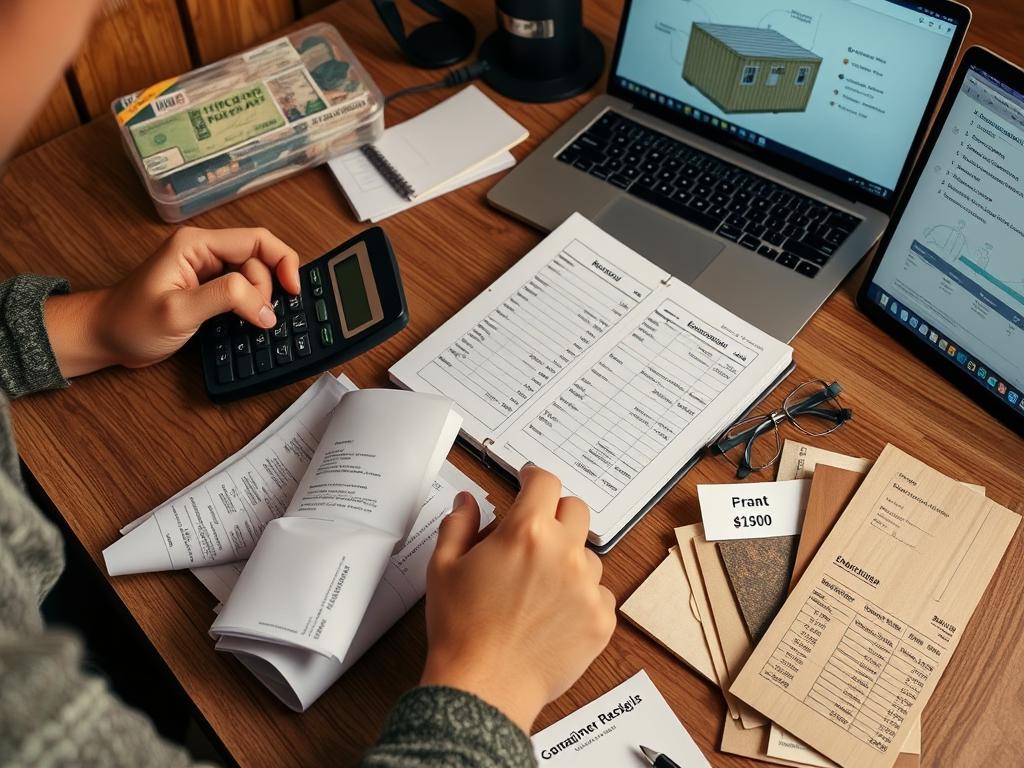
Careful budgeting helps keep your container conversion project on track
Understanding the potential costs involved in your container camper conversion helps with realistic planning. Here’s a breakdown of typical expenses:
| Component | Budget Option | Mid-Range Option | Premium Option |
| Container (20ft) | $1,500-$3,000 (Used) | $3,000-$5,000 (Used, Good Condition) | $5,000-$7,000 (New/One-Trip) |
| Insulation | $500-$800 | $800-$1,500 | $1,500-$2,500 |
| Windows & Doors | $1,000-$1,500 | $1,500-$3,000 | $3,000-$5,000 |
| Electrical System | $800-$1,500 | $1,500-$3,000 | $3,000-$6,000 |
| Plumbing | $500-$1,000 | $1,000-$2,000 | $2,000-$4,000 |
| Interior Finishing | $1,000-$2,000 | $2,000-$4,000 | $4,000-$8,000 |
| Furniture & Appliances | $1,000-$2,000 | $2,000-$4,000 | $4,000-$7,000 |
| Mobility Solution | $2,000-$4,000 | $4,000-$8,000 | $8,000-$15,000 |
| Total Estimate | $8,300-$15,800 | $15,800-$30,500 | $30,500-$54,500 |
Money-Saving Tip: Consider using reclaimed materials, second-hand appliances, and doing as much of the work yourself as possible to significantly reduce costs. Many container camper builders report savings of 30-50% by sourcing recycled materials and fixtures.
Plan Your Budget
Use our interactive Container Camper Cost Calculator to get a customized estimate for your specific project.
Creative Design Ideas for Shipping Container Campers

Rooftop decks add valuable outdoor living space to container campers
Rooftop Deck
Transform your container roof into usable outdoor space with a rooftop deck. This effectively doubles your living area and provides an elevated view of your surroundings. Add railings, weather-resistant decking, and access via exterior stairs or interior ladder.
Expandable Sides
Create fold-out or slide-out sections that expand your living space when parked. These can be simple awning-covered outdoor areas or fully enclosed room extensions that significantly increase your interior square footage.
Off-Grid Systems
Design your container camper for complete self-sufficiency with solar power, rainwater collection, composting toilets, and efficient wood or propane heating. This allows for extended stays in remote locations without hookups.
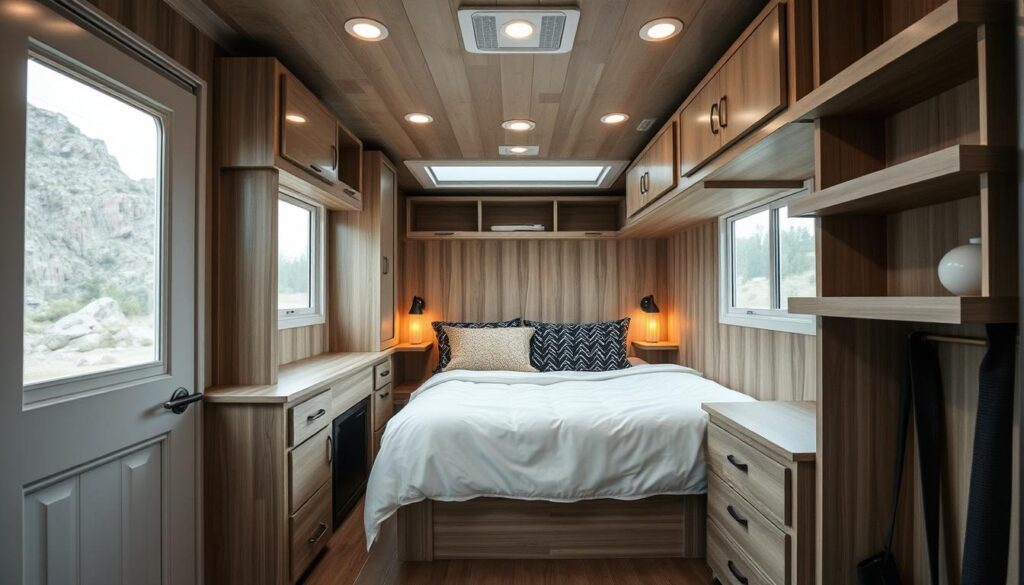
Clever storage solutions maximize usable space in container campers
Multi-Functional Furniture
Maximize your limited space with furniture that serves multiple purposes:
- Dining table that converts to a bed
- Seating with integrated storage underneath
- Kitchen counter extensions that fold away when not in use
- Wall beds (Murphy beds) that reveal desk or seating when closed
Indoor/Outdoor Flow
Create a seamless connection between indoor and outdoor spaces:
- Full-width glass doors that open to a deck
- Outdoor kitchen extensions
- Retractable awnings for shade
- Indoor/outdoor flooring materials for visual continuity
Common Challenges and Solutions
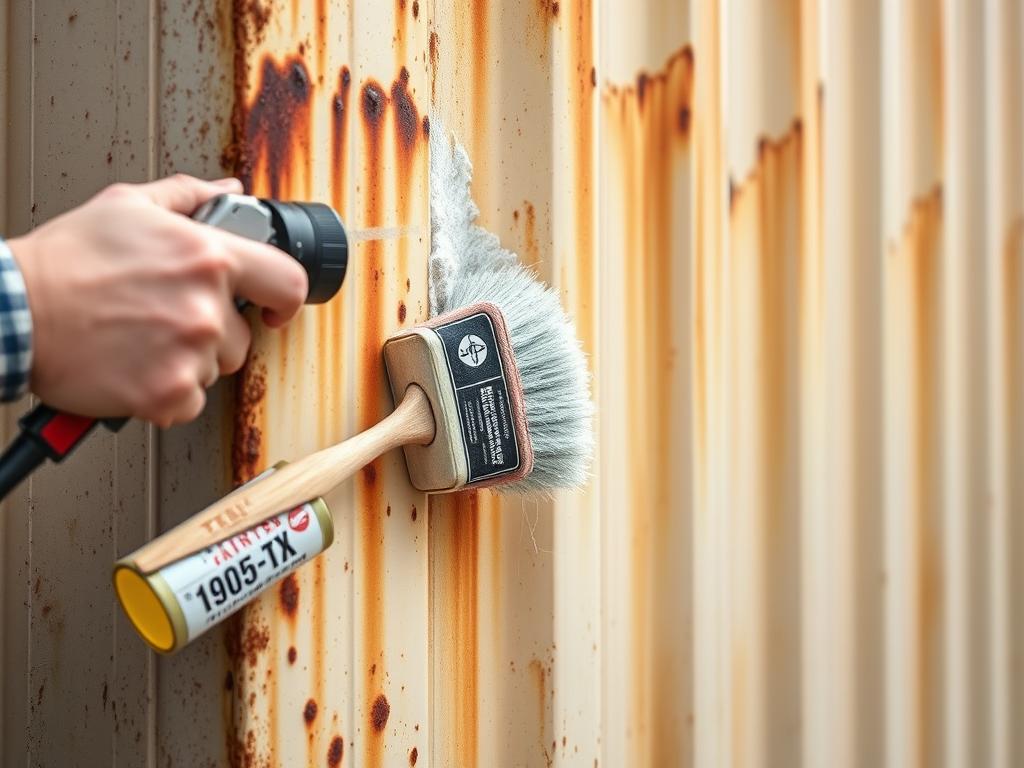
Proper rust prevention is essential for container longevity
Challenges
- Rust and corrosion management
- Condensation and moisture control
- Temperature regulation (containers heat up/cool down quickly)
- Weight distribution for mobile containers
- Limited interior width (7’8″ standard)
- Zoning and permit restrictions
Solutions
- Proper preparation, primers, and marine-grade paints
- Effective insulation, ventilation, and vapor barriers
- Insulation, reflective paint, and climate control systems
- Strategic layout planning and lightweight materials
- Space-efficient design and outdoor extensions
- Research local codes or consider RV certification
Rust Prevention and Treatment
Shipping containers are built to resist corrosion, but proper maintenance is essential:
- Inspect regularly for rust spots, especially around welds and seams
- Remove rust with wire brushes, sandpaper, or sandblasting
- Apply rust converter to any affected areas
- Use marine-grade primers and paints for long-term protection
- Consider sacrificial zinc anodes in highly corrosive environments
Mobility Considerations
If you plan to move your container camper frequently, consider these factors:
- Trailer systems specifically designed for containers
- Weight distribution and balance for safe towing
- Removable or folding exterior additions
- Secure mounting systems for all interior components
- Proper documentation and permits for road transport
Conclusion: Your Container Camper Journey
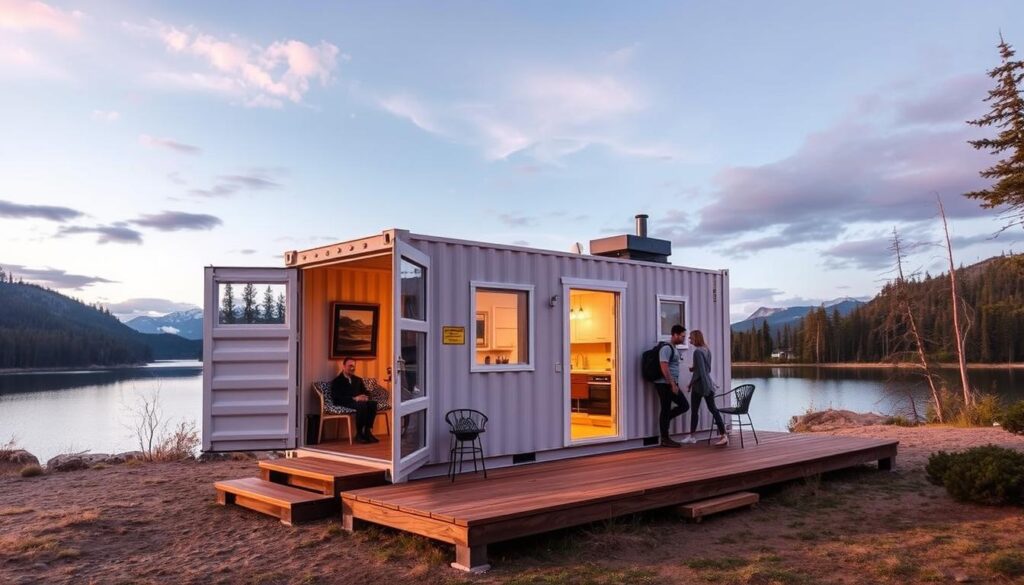
A completed shipping container camper represents the perfect blend of sustainability, durability, and personal expression
Converting a shipping container into a camper is a rewarding project that combines sustainability, creativity, and practical living. While the process requires careful planning and work, the result is a unique, durable living space that can serve you for decades.
Whether you’re creating a weekend getaway, a mobile tiny home, or a permanent off-grid retreat, your shipping container camper represents the perfect blend of repurposing existing materials and creating something new that perfectly fits your lifestyle.
Remember that the journey is as rewarding as the destination. Document your conversion process, connect with the container conversion community, and share your experiences to inspire others on their own shipping container camper adventures.
Start Your Container Camper Project Today
Get access to our complete resource library including plans, supplier connections, and step-by-step tutorials.

